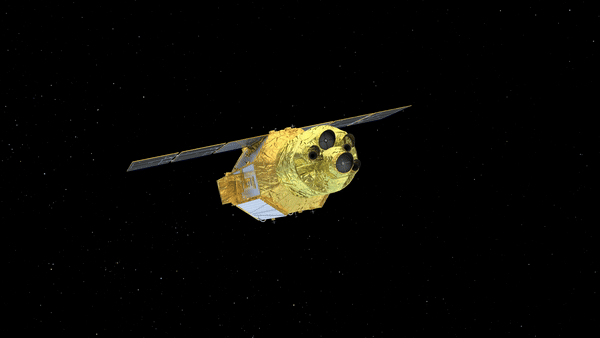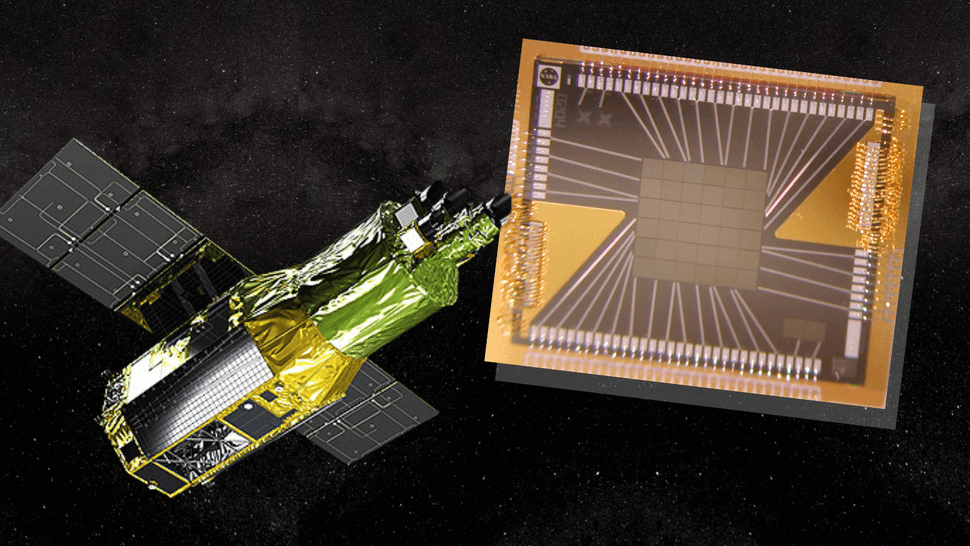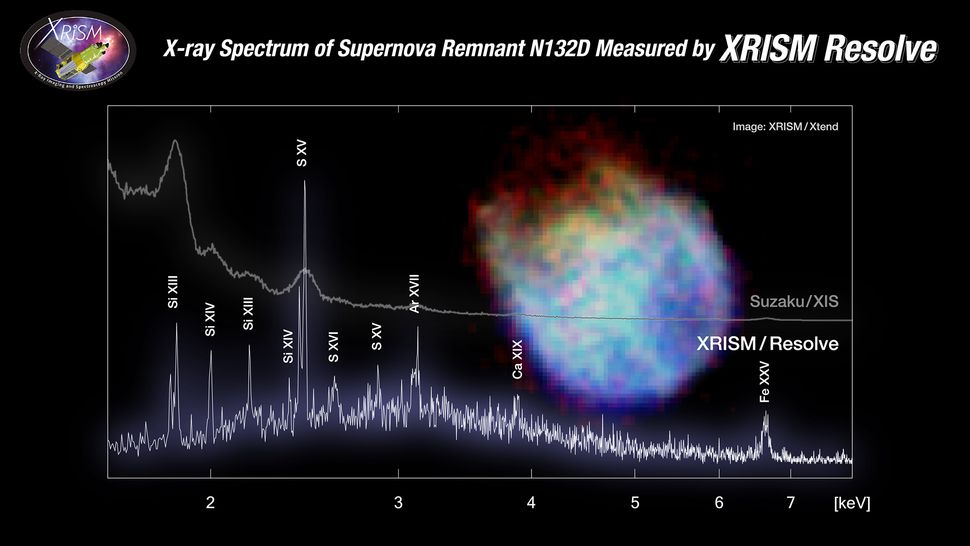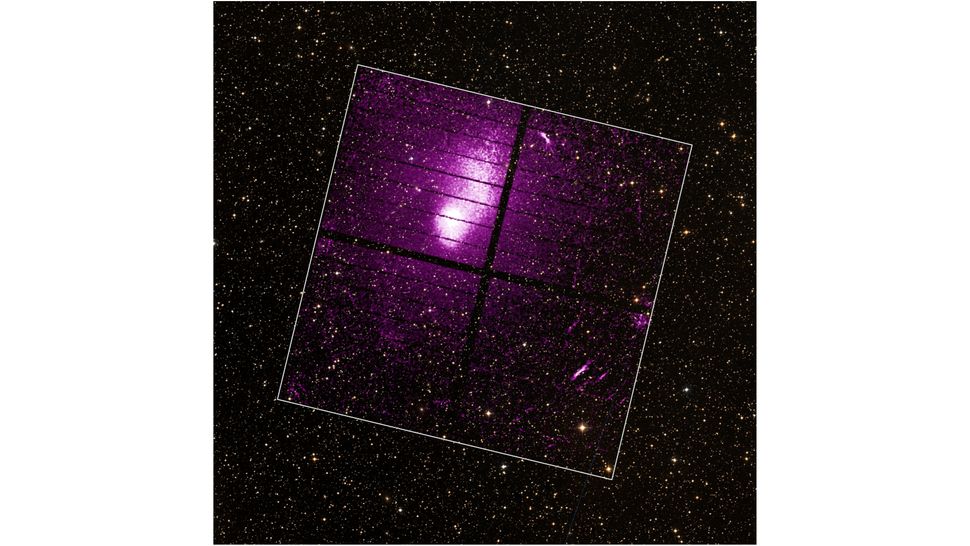
‘Absolutely gutted’: How a jammed door is locking astronomers out of the X-ray universe (Image Credit: Space.com)
Just outside Hiroya Yamaguchi’s office is a blackboard crowded with exploded stars, spaceship schematics and spectral lines. The A4 printouts obscure almost all the free space, except for a tiny corner where he sometimes scribbles in white chalk. Right now, Yamaguchi, an associate professor at Japan’s Institute of Space and Astronautical Science, is standing in front of this blackboard, facing me.
He’s giving me a crash course on the X-Ray Imaging and Spectroscopy Mission, or XRISM, a partnership between NASA, the Japanese Aerospace Exploration Agency (JAXA) and the European Space Agency (ESA). The first thing I learn is I’ve been saying the telescope’s name wrong this whole time. Thankfully, I’ve mostly been repeating the incorrect “ex-riz-um” in my head. It’s actually pronounced “criz-um.”
The second is that this space telescope was launched on September 6, 2023, carrying the heaviest weight of all: Expectation.
Related: JAXA, NASA reveal 1st images from XRISM X-ray space telescope
JAXA’s two previous X-ray telescopes, Suzaku and Hitomi, both experienced issues after launch. Suzaku’s spectrometer malfunctioned after launch, but it was able to carry out a decade-long imaging mission. Hitomi was disastrous: After snapping its first light image, the spacecraft went into an uncontrolled spin and broke apart. So far, XRISM has been performing well, Yamaguchi says, and has already provided scientists with an abundance of data since first light in January — including some discoveries no one expected to find.
“There are so many surprises,” Yamaguchi laughs, glancing around the various printouts stuck to the blackboard.
There is, however, a bit of a problem.
First, the good news: The telescope’s main instrument, a soft X-ray spectrometer known as Resolve, is working as expected. The slightly-worse news: An aperture door covering Resolve has not opened. Multiple attempts to open the door — or “gate valve” — have failed. Despite reports suggesting JAXA and NASA have decided to “operate the spacecraft as is for at least 18 months”, Yamaguchi told me that “has not been officially decided.”
A NASA spokesperson confirmed “NASA and JAXA continue to hold ongoing discussions about the best path forward to operate XRISM; the current, leading option is to collect science for the next 18 months before making another attempt to open the gate valve, but the agencies will continue to assess alternatives.”
With the door closed, an intriguing “What If?” situation for mission specialists and X-ray astronomers presents itself. On one hand, the spacecraft is working superbly and showing it’s capable of delivering a heap of new, exciting data. Trying to open the door risks damaging the spacecraft. On the other hand, opening the door could fundamentally change our understanding of the universe.

Solve for ‘X’
X-rays provide a way to probe some of the most energetic phenomena in the universe — but, because Earth’s atmosphere blocks X-rays, space-based telescopes are a prerequisite.
“We’re unraveling the composition of the universe,” Aurora Simionescu, an astrophysicist at the Netherlands Institute for Space Research, tells me. “That’s what X-rays do.”
There are more than a dozen X-ray telescopes currently in space, with NASA’s Chandra observatory, one of its so-called Great Observatories, perhaps the most well known because of the incredible views it has provided of the X-ray universe. XRISM, with its ability to see the most detailed X-ray spectra yet, hopes to carve out a similar legacy. Yamaguchi points out, however, that although Chandra and XRISM observe the same part of the electromagnetic spectrum, they’re meant to do so in different ways. That comes down to the instrumentation on board.
Resolve is what’s known as a microcalorimeter spectrometer. The detection apparatus converts X-rays to heat, measuring minute changes in temperature — we’re talking changes in millikelvins — to determine the number and energy of X-rays observed coming from a particular region of space. Energy is measured in electron volts (eV).
The instrument therefore has to be cooled down to just a few degrees above absolute zero. That’s colder even than the cosmic microwave background, which is leftover radiation from the beginning of time. This radiation is scattered across our universe, yet hidden to the human eye because of how absolutely frigid it is. “You are basically almost 30 times colder than the coldest part of outer space,” says Simionescu. The extreme cooling effect is achieved by chemical and mechanical means.
Chandra uses a different style of X-ray detector, which features an array of charge-coupled devices, or CCDs. This converts X-ray photons to electrons, rather than to heat.
Measuring energy is particularly useful, because you can plot the number of X-rays that reach your telescope against their energy level — creating what researchers call a “spectrum.” XRISM’s Resolve has an edge in this case. It’s able to measure energies about 20 to 30 times higher than Chandra can, and with greater resolution. “This allows XRISM to study much more detail about the atomic physics and the velocity structure of the X-ray sources,” says Patrick Slane, director of the Chandra X-ray Center.

Chandra, however, has advantages of its own. It’s also constructed with the highest quality X-ray mirrors ever built, Slane says, which means its imaging quality far exceeds XRISM’s. The key here is the mirrors give Chandra an angular resolution of 0.5 arcseconds, which essentially allows Chandra to distinguish between objects in the sky that are close together. Compare that to XRISM, which has an angular resolution of 1.7 arcminutes.
Thanks to that feat of engineering, Slane says Chandra can pick out X-ray point sources about 200 times more easily than XRISM could. In practice, this makes NASA’s telescope extremely useful for focusing on those point sources — distant, smaller targets like neutron stars, planets and comets. XRISM is good for “extended” targets, like the diffuse gas between and within galaxies.
Which, at last, brings us to XRISM’s gate valve: The closed door effectively blocking low energy X-rays from reaching the detector. As of now, the telescope is continuing to explore the high-energy X-ray universe because those wavelengths are not affected by the gate dilemma — in fact, Yamaguchi and Simionescu both say it’s already returning fantastic results at higher energies.
But if the door is stuck for good, scientists will have to contend with parts of our cosmos remaining inaccessible… at least, until another X-ray telescope comes along, which is likely to be the Athena mission in the mid-2030s.
XRISMgate-gate
The gate valve was designed to maintain a near-vacuum within the telescope’s cryostat — essentially the fridge that ensures its instruments remain extremely cold — while XRISM was stationed on Earth.
Once a telescope reaches orbit, maintaining this sort of vacuum isn’t an issue. In space, space itself creates the vacuum. For that reason, the gate valve was designed to flip open in a two-step process after launch, via a set of actuators. In short, the actuators would slide back to allow the door — made of a beryllium window and steel mesh — to flip open. That didn’t happen.
JAXA has tried to finesse the apparatus open on three different occasions, but it hasn’t budged. The next attempt would be a much riskier one, potentially requiring the spacecraft to warm up from its extremely low temperatures and be shaken about. The goal? Dislodging the actuators with force. That’s a risk the space agencies operating XRISM will need to weigh up. With the gate valve closed, they’re already banking data. And it’s very good data.
“The most beautiful thing is when you look at the data, and it looks nothing like what you expected — and this is happening with the current XRISM data,” says Simionescu.

Still, it’s a tough break for Simionescu. She’s particularly interested in studying X-rays from “galactic atmospheres” — the stuff XRISM was built to look at with an open gate valve. With the gate closed, that part of the X-ray universe remains locked away. She fully agrees with the decision not to risk trying to open the gate — at least for now. But that doesn’t mean it’s not painful, knowing what could be.
“I am absolutely gutted that we can’t see below 2 keV,” Simionescu says.
And what could lie below?
Some X-ray space telescopes, like the ESA’s XMM-Newton, can see lower energy X-rays, down to below 2 keV. For instance, it has observed the Coma Cluster, which contains over 1,000 galaxies, at energies as low as 0.3 keV. And XRISM’s other instrument, Xtend, is also able to get down to lower energies. But these are CCD detectors too and not as useful for obtaining spectra.
Outside of XRISM, there’s no X-ray telescope orbiting the Earth with capability to look across “extended” objects at low energies with high resolution, which is particularly important for Simionescu’s work.
During an online call, she shares a wide-field X-ray image of M87, the first black hole to be imaged by humans in visible light. The image was snapped by Chandra in 2019.
“This is my favorite object in the world,” she says excitedly.
The space surrounding that black hole is a maelstrom. Simionescu’s cursor bounces around the sky as she points out the large jet emanating from the black hole as well as areas of dense gas and a long filament that stretches light-years into the cosmos. She describes a graph of the spectra observed by Chandra at M87 — all below 2 keV — and notes how it’s all “a mumbo jumbo” of emission lines from oxygen, neon, nickel and other gases.
With the gate open, that would change.
“You could tell what is the composition of the gas, how is it being moved, how is it being pushed out by the black hole — which is all information that, right now, you cannot get,” she says.
It’s interesting to consider the leap forward with XRISM against the backdrop of uncertainty that surrounds NASA’s Chandra mission.
Unfortunately, the field of X-ray astronomy could be without Chandra in the near future. The space telescope’s operations, which have lasted for 25 years, face extreme budget cuts in 2024. Astronomers say the proposed budget would result in the mission’s cancellation.
“If Chandra were to be canceled, we would lose a tremendous resource for all of modern astrophysics,” Slane says.
That would be an ignominious end for the Great Observatory, which remains invaluable for future discoveries, including working in tandem with XRISM. If JAXA does unjam its door, Chandra will be an important tool to follow up XRISM’s observations.
Meanwhile, the ghosts of Suzaku and Hitomi will linger until the next attempt at opening the door. For now, the field of X-ray astronomy is excited about what’s to come. The worst case scenario isn’t all that bad, depending how you look at it.
“We’re taking fantastic data that nobody has ever been able to take before,” Simionescu says. “The spectra are all absolutely spectacular.”





